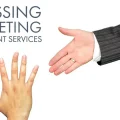Looking for proof that personalization works? Consider the case of one historical museum that used personalization to create a lift in donations of 30%.
For the past decade, the museum had been using direct mail as its primary way to solicit donations. After years of success, however, effectiveness was starting to wane. The museum wondered if personalizing the message to each recipient would breathe new life into its efforts.
To find out, the museum split its mailing in half. To the first half, it sent a traditional static newsletter. To the second half, it sent a personalized newsletter. Personalization included the person’s name, the state in which they lived, the number of charter members in that state, and prefilled the response forms to make sending in a donation easier. The results?
- Among those actively contributing, response rates increased 30%.
- Among less active but still donating members, response rates increased 25%.
- Among both active and less active members, the value of the donations increased.
Why did this campaign work?
In this case, personalization taps into the recipient’s sense of responsibility to the organization. “They know me — they are relying on me,” not just as an anonymous donor, but as someone the museum relies on by name. When you call someone by name, there is a responsibility that comes with that, especially in the world of fundraising.
Including the number of charter members in the recipient’s state also taps into the sense of collective responsibility. “Look how many other people are deeply supporting this cause. I should be more committed, as well.”
Finally, the prefilled form removed one of the barriers to responding to any campaign—the need to fill out a form, address an envelope, and add a stamp. If all the recipient has to do is drop a check in the envelope and put it in the mailbox, that alone can elevate response.
Whether you are a nonprofit organization or not, the lessons are clear. Call your customers by name, tap into collective responsibility (or collective participation in some kind of benefit), and make it easy to respond. Then watch your response rates soar.



